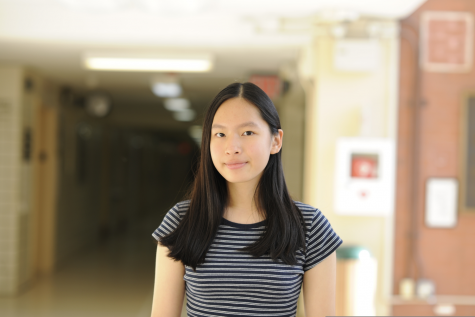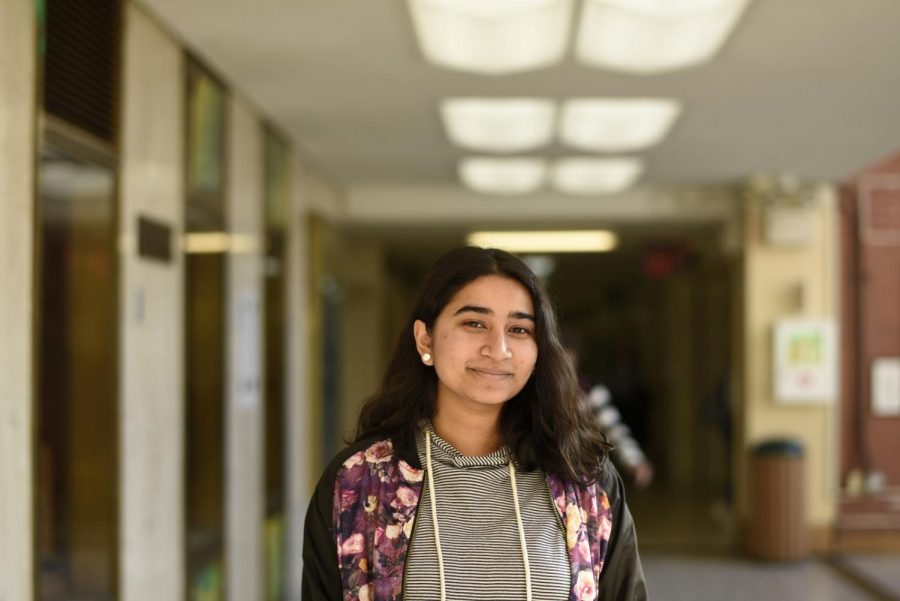TikTok on the Clock (Not the KE$HA song)
The short video app TikTok has gained popularity throughout the Bronx Science community.
“[TikTok] is the internet revolution,” said Puspita Dasroy ’20. “TikTok deserves the world but the world doesn’t deserve TikTok.”
Anyone who has spent time around teenagers in the last year will know about the video-sharing app that has taken the world by storm: TikTok. It was launched in China as Douyin in September 2016 by Byte Dance, a Beijing based company, and as TikTok in markets outside of China in 2017. Both versions of the app have been collectively downloaded by over a billion people worldwide as of February 2019.
With such a far-reaching influence, it should come as no surprise that TikTok has Bronx Science students hooked. Out of 103 responses to a poll that I conducted, 45.6% of students said that they have TikTok on their phones, and 31.1% said that they create “TikToks,” whether they are for themselves or their followers.
TikTok is a social networking device that allows users to share short videos lasting from 3 to 60 seconds, whether publicly or saved to their private accounts. The videos, known as TikToks, are most commonly lip-syncing, comedy, and showcasings of talent. In the U.S., TikTok has had a significant cultural impact, serving as a platform for users to experiment with fashion, choreograph fun dances, and share their opinions and experiences, whether they are serious or satire. It has also enabled many previously unknown songs to rise to the top charts through their popularity on TikTok.
Many students claimed that they had once looked down on TikTok, but that as they saw their peers enjoying the app, they developed a more positive opinion. “I used to think that it was really cringey, but everyone in junior year either watches TikTok, does TikToks, or knows about TikTok,” Shaira Jafar ’21 said. “I think of it as a funny past-time just like Instagram is.” The short, entertaining videos reel users in. “It is incredibly addicting,” Sofia Mahairas ’20 said. “I think for most people it started out as a joke, but now everyone is hooked!”
Comedy TikToks are very popular among students, whether they are skits, POV (where a creator acts out a situation in the point-of-view of the viewer), memes, or other generally humorous videos. “My favorite types of videos consist of meme-y content,” said Arona Islam ’20.
Dance and music videos are also favorites, and Bronx Science students can sometimes be seen in the cafeteria or stairwells learning choreography and making TikToks with their friends. “One of my favorite types is probably dance related Tik Toks because I would actually like to learn the choreography,” said Afra Ankita ’23.
While some prefer to focus on specific types of videos, many enjoy a wide variety of content from their “For You” page, from makeup tutorials to artistic showcases to the latest funny trends. “I like all Tik Tok videos,” said Chancie Velasquez ’21. “The dances are fun to learn, hearing people rant jokingly always makes me laugh, and the cultural ones (personally the Latino culture) where people portray different parts of their culture are really relatable.”
Naturally, with any famous trend, TikTok also has its fair share of critics. “It’s useless, really,” David Ugo-Omenukwa ’21 said. “People post low quality videos of them doing the same things, and somehow they still get a lot of likes and comments. This fuels their desperate need of validation from others, thinking that they make good content, fueling this never-ending cycle. They think they are going to hit it big to be famous, if they keep on going, wasting their time. When reality hits, their little bubble will collapse and they don’t know how to cope.”
Regardless of the truth in this comment, it seems that Bronx Science TikTokers create videos solely for their personal enjoyment. Many students reported that they made TikToks with and for their friends, whether they posted them publicly or not. “I wouldn’t mind becoming viral,” said Grace Lim ’22. “But I make them for just me and my friends.” Shaon Barua ’21 also uses the app to create content just for fun. “I set my TikToks as public for anyone to see, simply because I enjoy the content I see so much that I want to share my own ideas with everyone else,” said Barua.
TikTok is a creative outlet for many who use it, and a platform for them to showcase their work. “No other media platform is designed in the way TikTok is,” Puspita Dasroy ’20 said. “It gives creators a chance to express themselves in the most natural form.” The short video format, popularized by the app known as Vine in the early 2010s, grabs the audience’s attention and gives them a taste of what content different people produce. “TikTok allows users to express a variety of talents they may want to share, be it art, dancing, comedy, editing, videography, or even their own musical talents,” said Ulises Ponce ’23.
Though subtle, the cultural impact of TikTok has permeated the U.S., not excluding Bronx Science. From memes to fashion to cultural acceptance, the trends spread through the app have become a phenomenon in many teens’ lives. “There were people who dressed up as VSCO girls and e-boys/girls during Halloween,” said KM Kamal ’21, who is amused by the popular emulation of TikTok fashion trends.
Other students find that certain trends have had a more profound impact on their lives. “TikTok has showed me personally that there are American children with Hispanic culture that are deeply in touch with their Hispanic side and are not afraid to show that,” said Velasquez. “That’s something I’ve always struggled to find. Especially since I’m really in touch with my Hispanic culture, it’s nice to know that there are other people who are too.”
Whether it is for culture, creativity, or just for fun, what started out as a fun social media app has brought a large population of teens together in their enjoyment of these short videos. There is no telling how long TikTok will hold the attention of its audience, but for now, from school stairwells to the global scale, it continues to entertain students in many different forms.
TikTok is a creative outlet for many who use it, and a platform for them to showcase their work.

Asuka Koda ’23 used to create TikToks for her 800 followers.
Darya Lollos is a Managing Editor for the ‘Science Survey’ and an Academics reporter for ‘The Observatory’. Journalism within Bronx Science keeps...
Anna Buhler is a Graphic Designer for ‘The Observatory' yearbook. She is interested in journalistic photography since it can give a platform to...











